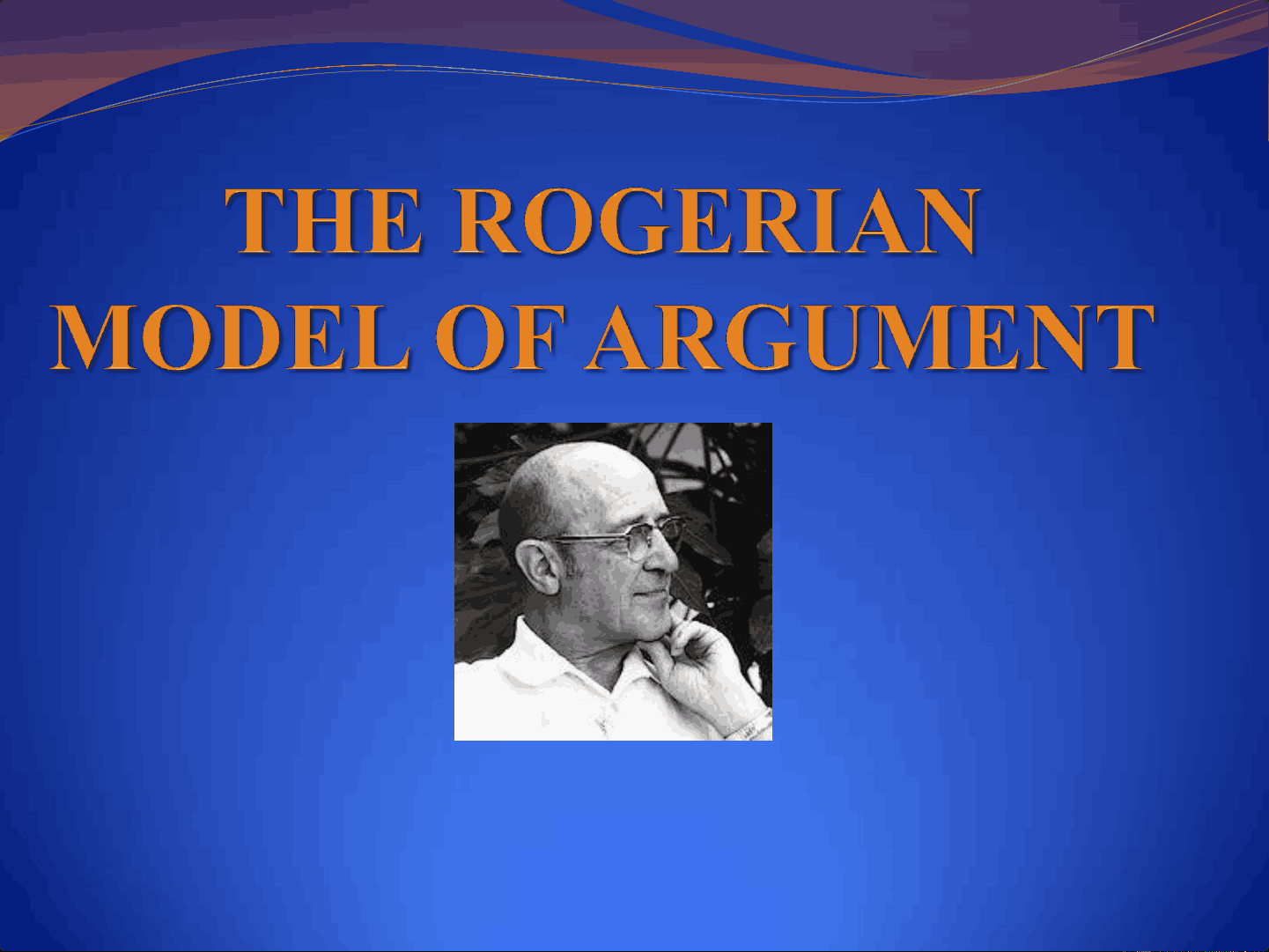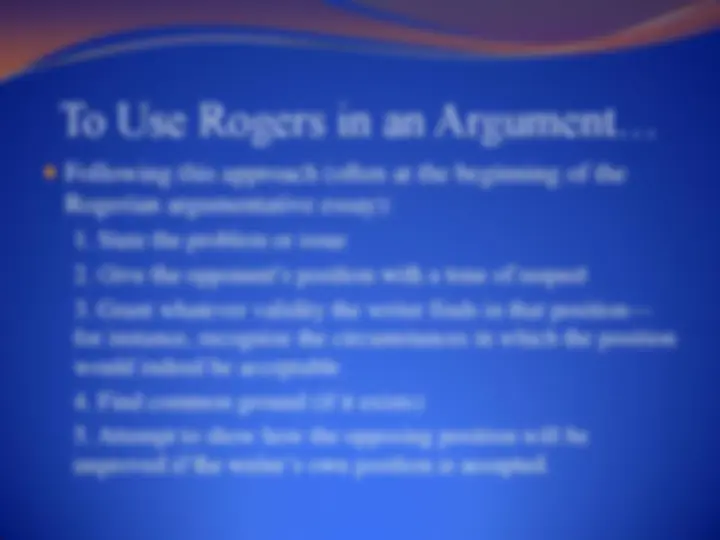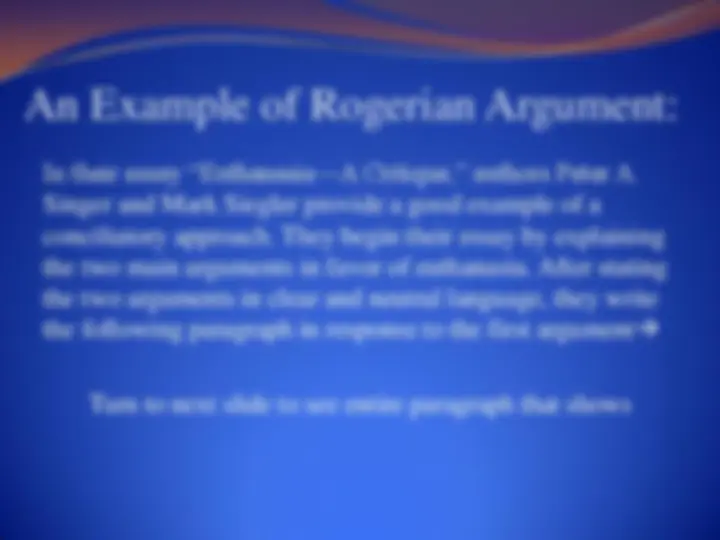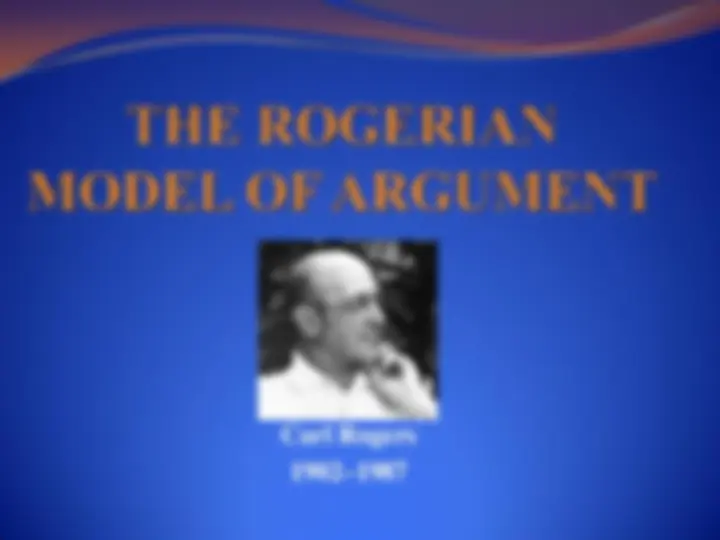






Study with the several resources on Docsity

Earn points by helping other students or get them with a premium plan


Prepare for your exams
Study with the several resources on Docsity

Earn points to download
Earn points by helping other students or get them with a premium plan
Community
Ask the community for help and clear up your study doubts
Discover the best universities in your country according to Docsity users
Free resources
Download our free guides on studying techniques, anxiety management strategies, and thesis advice from Docsity tutors
Carl Rogers, a renowned psychologist, advocates for successful arguments to adopt a conciliatory approach. This approach involves showing respect for the opposition, seeking common ground, and qualifying claims. an insight into Rogers' argumentative style and an example of its application in an essay on euthanasia by Singer and Siegler.
Typology: Study notes
1 / 8

This page cannot be seen from the preview
Don't miss anything!





Carl Rogers
1902 – 1987
An Example of Rogerian Argument:
In their essay “Euthanasia—A Critique,” authors Peter A. Singer and Mark Siegler provide a good example of a conciliatory approach. They begin their essay by explaining the two main arguments in favor of euthanasia. After stating the two arguments in clear and neutral language, they write the following paragraph in response to the first argument
Turn to next slide to see entire paragraph that shows
We agree that the relief of pain and suffering is a crucial goal of medicine. We question, however, whether the care of dying patient cannot be improved without resorting to the drastic measure of euthanasia. Most physical pain can be relieved with the appropriate use of analgesic agents. Unfortunately, despite widespread agreement that dying patients must be provided with necessary analgesia, physicians continue to underuse analgesia in the care of dying patients because of the concern about depressing respiratory drive or creating addiction. Such situations demand better management of pain, not euthanasia.
For more on the Rogerian
Approach to Argument, read…
Chapter 10 in our textbook From Critical Thinking to Argument
Check out these helpful resources that provide even more explanation of Rogerian Argument:
http://www.wpi.edu/Images/CMS/Diversity/Rogerian.Argument.pdf
http://ocw.usu.edu/english/introduction-to-writing-academic- prose/rogerian-argument.html-skinless_view.html
Carl Rogers
1902 – 1987